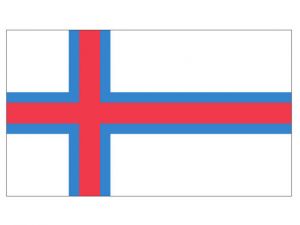Language/Faroese/Grammar/Past-Continuous-Tense
Faroese has two past tenses, the simple past tense and the past continuous tense. The simple past tense is used to describe completed actions in the past, while the past continuous tense is used to describe ongoing actions in the past. In this lesson, you will learn how to form the past continuous tense in Faroese and practice using it in sentences.
Forming the Past Continuous Tense
To form the past continuous tense in Faroese, you need to use the auxiliary verb "vera" (to be) in the past tense, followed by the present participle (-andi form) of the main verb. The past tense of "vera" for the singular forms is "vóru" and for the plural forms is "vóruð". Here are the conjugations for "vera" in the past tense:
| Person | Singular | Plural |
|---|---|---|
| 1st Person | eg vóru | vit vóruð |
| 2nd Person | tú vóru | tygum vóruð |
| 3rd Person | hann/hún/tað vóru | tey vóruð |
To form the present participle of the main verb in Faroese, you need to add the suffix "-andi" to the infinitive form of the verb. Here are some examples:
| Infinitive | Present Participle |
|---|---|
| ganga (to walk) | gangandi (walking) |
| syngja (to sing) | syngjandi (singing) |
| lesa (to read) | lesandi (reading) |
| rithøvast (to write) | rithøvandi (writing) |
Once you have the past tense of "vera" and the present participle of the main verb, you can combine them to form the past continuous tense. Here are some examples:
- Eg vóru gangandi. (I was walking.)
- Tú vóru lesandi. (You were reading.)
- Hon vóru syngjandi. (She was singing.)
- Vit vóruð rithøvandi. (We were writing.)
Note that, in Faroese, the past continuous tense is used less frequently than in English. It is usually used to describe ongoing actions in the past that were interrupted by another action or event.
Using the Past Continuous Tense
The past continuous tense is used to describe ongoing actions in the past. Here are some examples:
- Eg vóru gangandi, tá ið hann ringdi. (I was walking when he called.)
- Tú vóru lesandi, tá ið eg kom í hús. (You were reading when I came home.)
- Hon vóru syngjandi, tá ið prentist saðurin. (She was singing when the power went out.)
- Vit vóruð rithøvandi, tá ið lærarin kom. (We were writing when the teacher came.)
In each of these examples, the past continuous tense is used to describe an ongoing action in the past that was interrupted by another action or event. Note that the simple past tense is used to describe the interrupting action or event.
The past continuous tense can also be used to provide background information in narratives, to describe the setting or ongoing actions that are happening at the same time as the main action in the story. Here are some examples:
- Eg vóru gangandi yvir fjallið, tá ið eg sá ein reið. (I was walking over the mountain when I saw a horse.)
- Tú vóru lesandi í garðinum, tá ið vit ringdu til tín. (You were reading in the garden when we called you.)
- Hon vóru syngjandi á stovugólvinum, tá ið eg kom í hús. (She was singing on the living room floor when I came home.)
- Vit vóruð rithøvandi í skúlabygninginum, tá ið tit lágu aftur á laðanum. (We were writing in the school building when you were back on the barn.)
Note that in these examples, the past continuous tense is used to set the scene and provide background information. The main action is described using the simple past tense.
Exercises
Now that you've learned how to form and use the past continuous tense in Faroese, it's time to practice using it in sentences. Here are some exercises for you to try:
- Form the past continuous tense of the following verbs:
- ganga (to walk)
- lesa (to read)
- syngja (to sing)
- spæla (to play)
- Use the past continuous tense to describe the following situations:
- You were studying when your friend called you.
- I was cooking when the guests arrived.
- They were dancing when the music stopped.
- We were hiking when it started raining.
Conclusion
Congratulations! You've completed the lesson on the past continuous tense in Faroese. In this lesson, you learned how to form the past continuous tense using the auxiliary verb "vera" and the present participle of the main verb, and how to use it in sentences to describe ongoing actions in the past. Keep practicing and you'll soon be able to use the past continuous tense with ease. Good luck!

